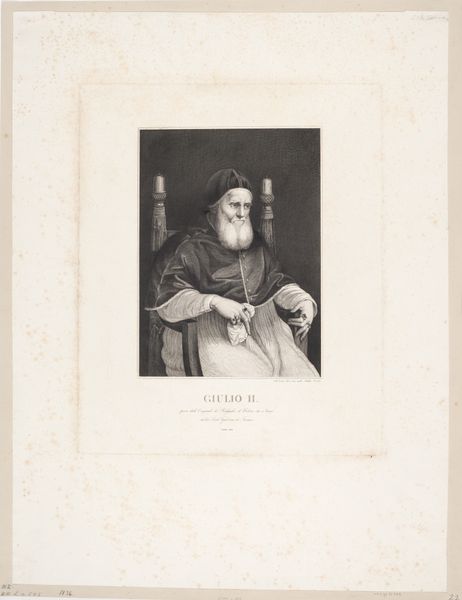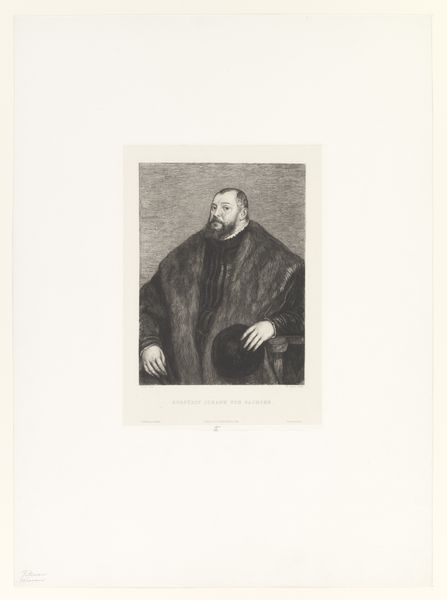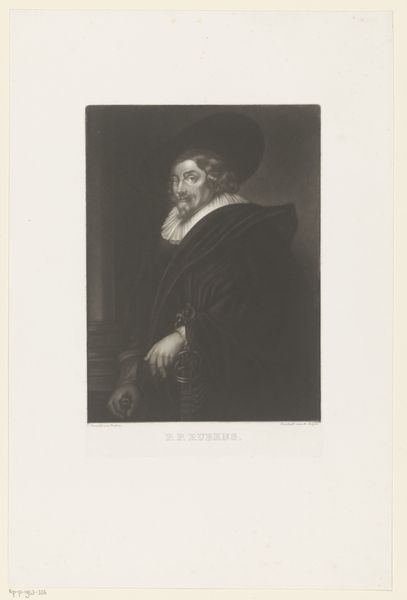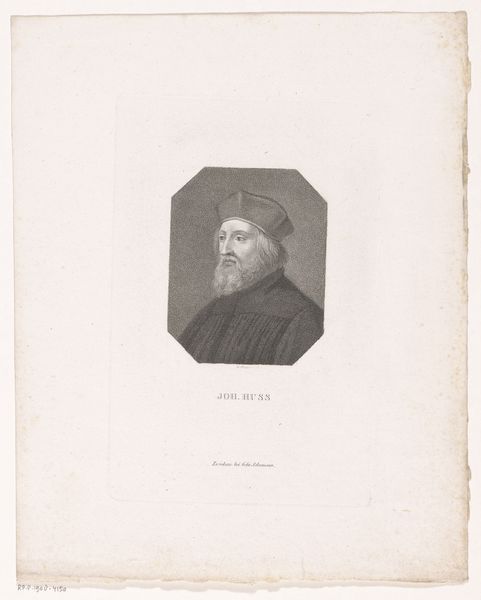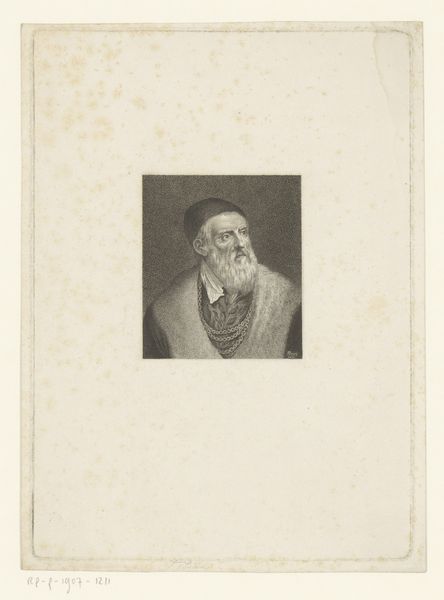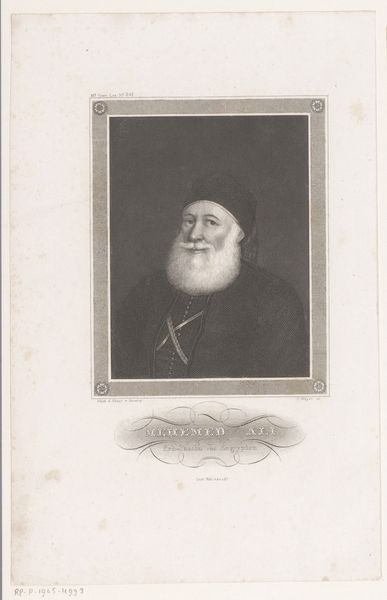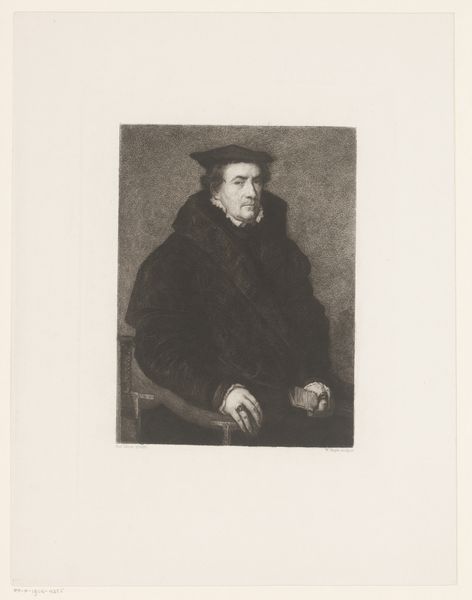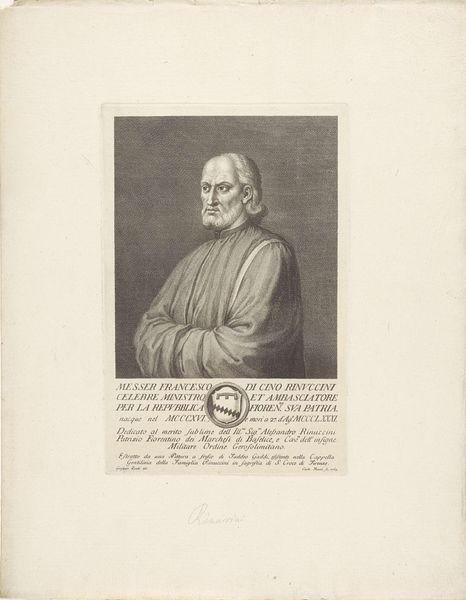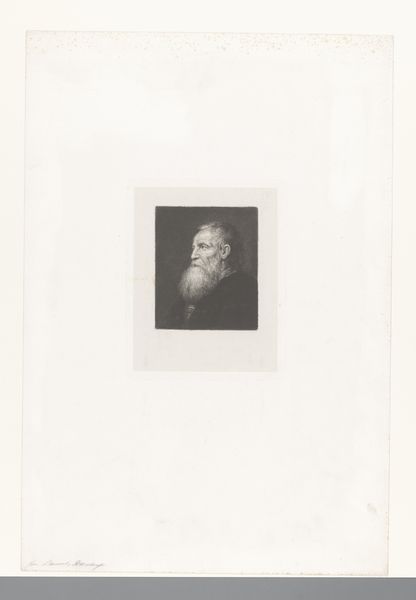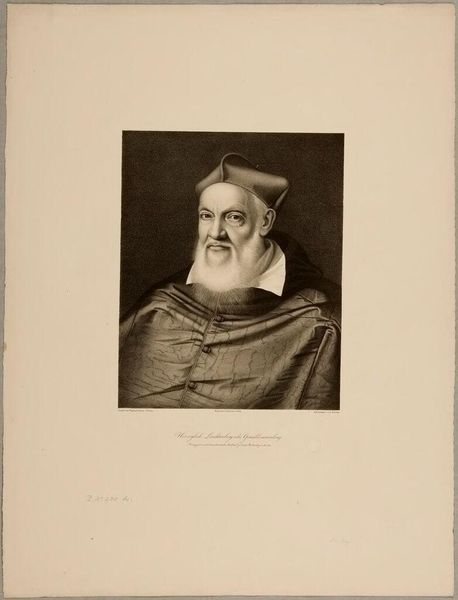
print, metal, engraving
#
portrait
#
neoclacissism
# print
#
metal
#
history-painting
#
engraving
Dimensions: height 356 mm, width 254 mm
Copyright: Rijks Museum: Open Domain
Curator: Charles Turner, a notable engraver working in the Neoclassical style, completed this print, "Portret van George III van het Verenigd Koninkrijk," between 1820 and 1823, employing metal and engraving techniques. Editor: Wow, what a weighty presence! He seems... resigned, almost. The textures, the velvety robe, the backdrop, all contribute to an overwhelming feeling of... solemnity. Curator: Indeed. Considering the historical context, it’s fascinating. George III’s reign was marked by significant political upheaval, including the Napoleonic Wars and the loss of the American colonies, events that shaped British identity profoundly. The portrait then becomes less about celebration and more about embodying national burden. Editor: Burden, yes! The face, while regal, suggests weariness. Even the crown visible in the background feels like another heavy accessory rather than a symbol of power. I feel like I can almost see the pressure of his position etched into his face. Curator: Turner’s choice of the Neoclassical style adds another layer. While Neoclassicism often conveyed ideas of order and reason, here it seems subdued, highlighting perhaps the inherent limitations and social constrains of royal power even within supposedly enlightened systems. Editor: The limited color palette contributes too. A more vibrant palette would possibly project some authority, yet these tones amplify this notion of gravitas, and maybe... austerity? Curator: Precisely. Reflecting on how political figures, especially monarchs, are depicted, the portrait invites critical analysis of power, its representation, and the intersection between individual and state. Editor: I guess you are totally right... it has changed how I see the work now! Initially, I only got its emotional, slightly mournful presence but the way you have shown its social importance brings it to a higher level. It transcends its face value now, for me. Curator: That’s the crux, isn’t it? How the intersections of politics and history meet individual subjectivity. It challenges simplistic views of rulers and perhaps ourselves. Editor: Very powerful... literally. Thank you.
Comments
No comments
Be the first to comment and join the conversation on the ultimate creative platform.
